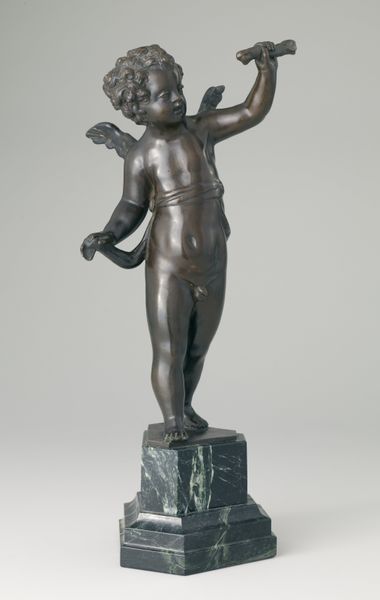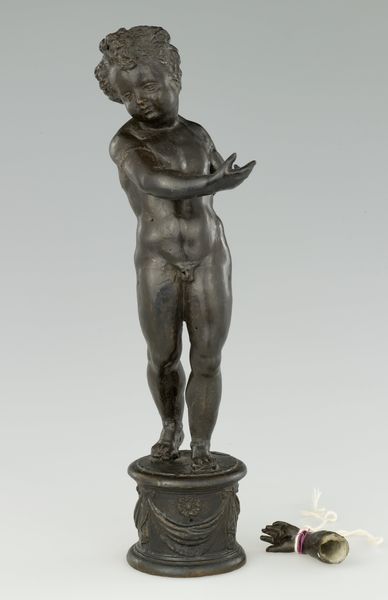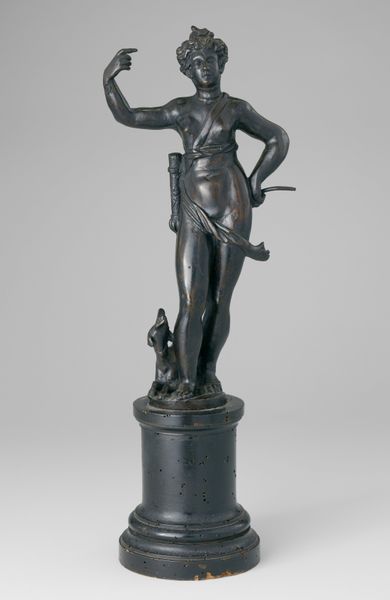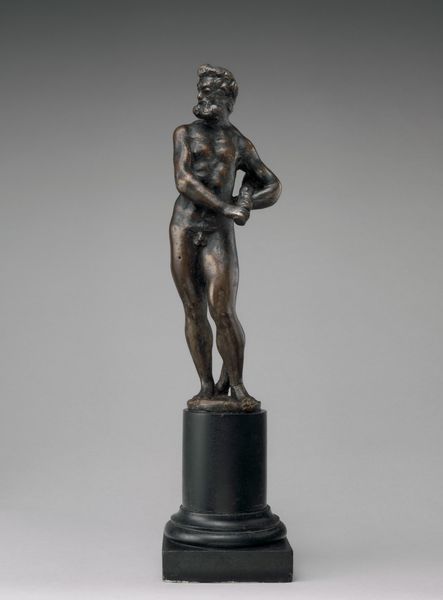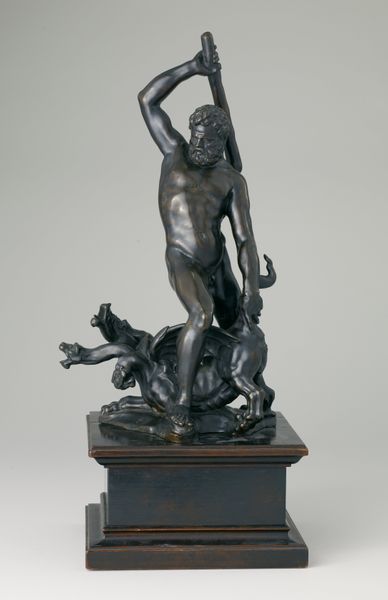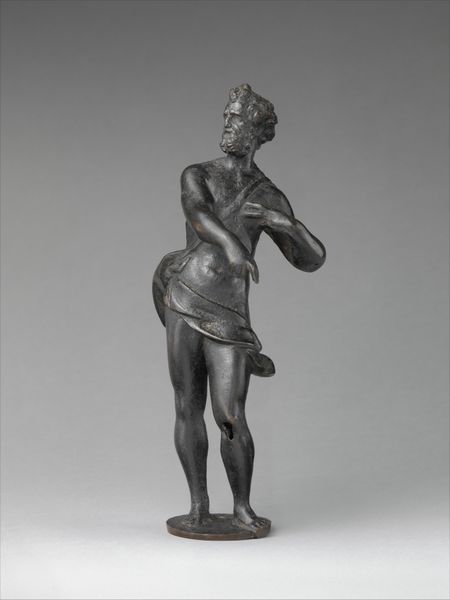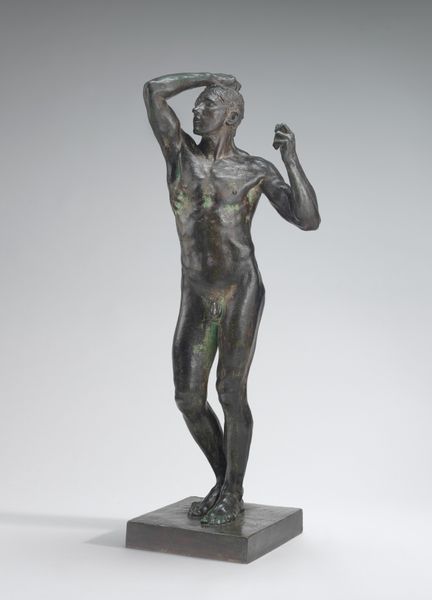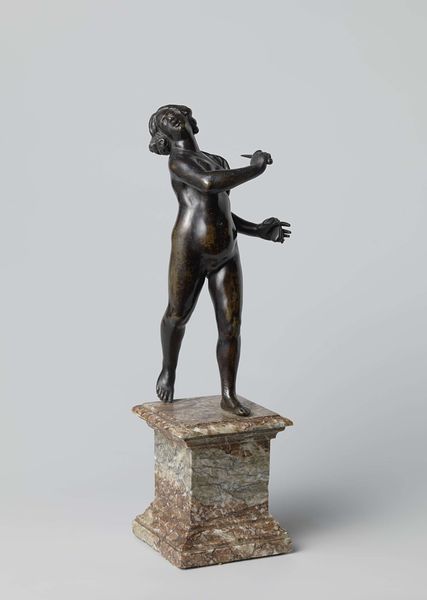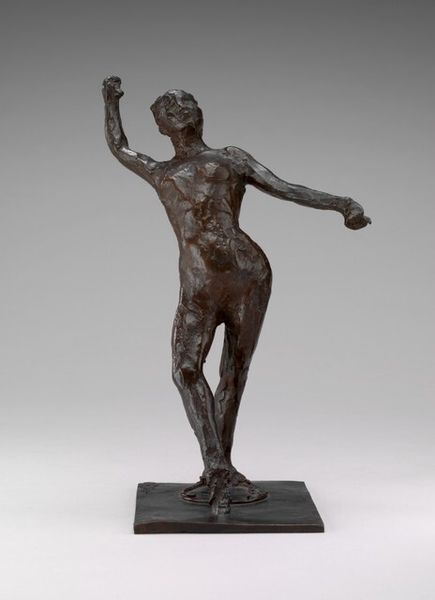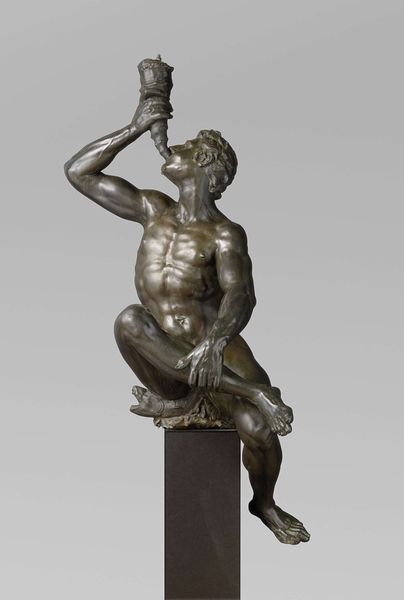
bronze, sculpture
#
sculpture
#
bronze
#
figuration
#
11_renaissance
#
sculpture
#
miniature
Dimensions: 19 3/4 x 7 x 7 1/4in. (50.2 x 17.8 x 18.4cm)
Copyright: Public Domain
Curator: Before us, we have an arresting small bronze sculpture titled "Cherub," dating back to around 1600, currently residing here at the Minneapolis Institute of Art. Editor: I'm struck by its seeming assertiveness—that arm raised high with what looks like a small trumpet, poised between declaration and delicacy, embodied by the soft curls and slight physique. What's the backstory on cherubs during the Renaissance? Curator: The image of the cherub went through some interesting permutations, particularly as tied to questions of gender and power. From early religious contexts where they figured as powerful guardians of sacred spaces, you start to see them recast in this period, becoming increasingly feminized and decorative. Editor: Precisely, this shift to a more diminutive, almost ornamental role feels pivotal. Look at the object he's holding, it's almost a proclamation of divine intent, or a gentle fanfare—a powerful message delivered via an angel that's visually quite diminutive. Curator: The work's function is also key. Many small bronzes from this era were created for private collectors and displayed within domestic spaces. This domestic context, considered with a more humanist framework increasingly invested in childhood and innocence, invites speculation as to its appeal and intent during that historical period. It begs questions regarding ownership, agency, and performative notions of faith at the time. Editor: Right, and it also speaks volumes about evolving cultural values. Bronze itself, as a material, connotes permanence and worth, so positioning the cherub this way reveals the intention for its inherent image—recasting divine power through this small, intimate object. The image shifts in emotional register, I suspect, within a home than within a vast church setting. Curator: It is an engaging object on so many levels, revealing historical attitudes toward faith, beauty, and power dynamics. Editor: Indeed—it is a testament to how deeply imbued visual symbols can be within a given context. Thank you.
Comments
No comments
Be the first to comment and join the conversation on the ultimate creative platform.
